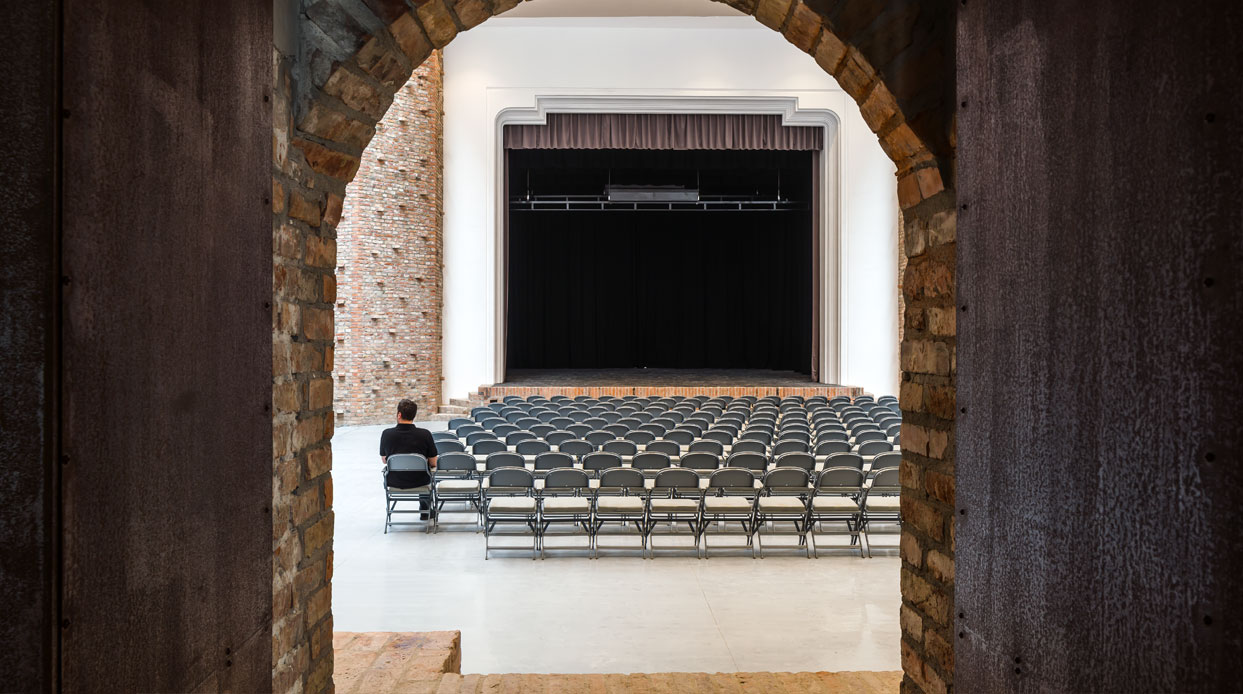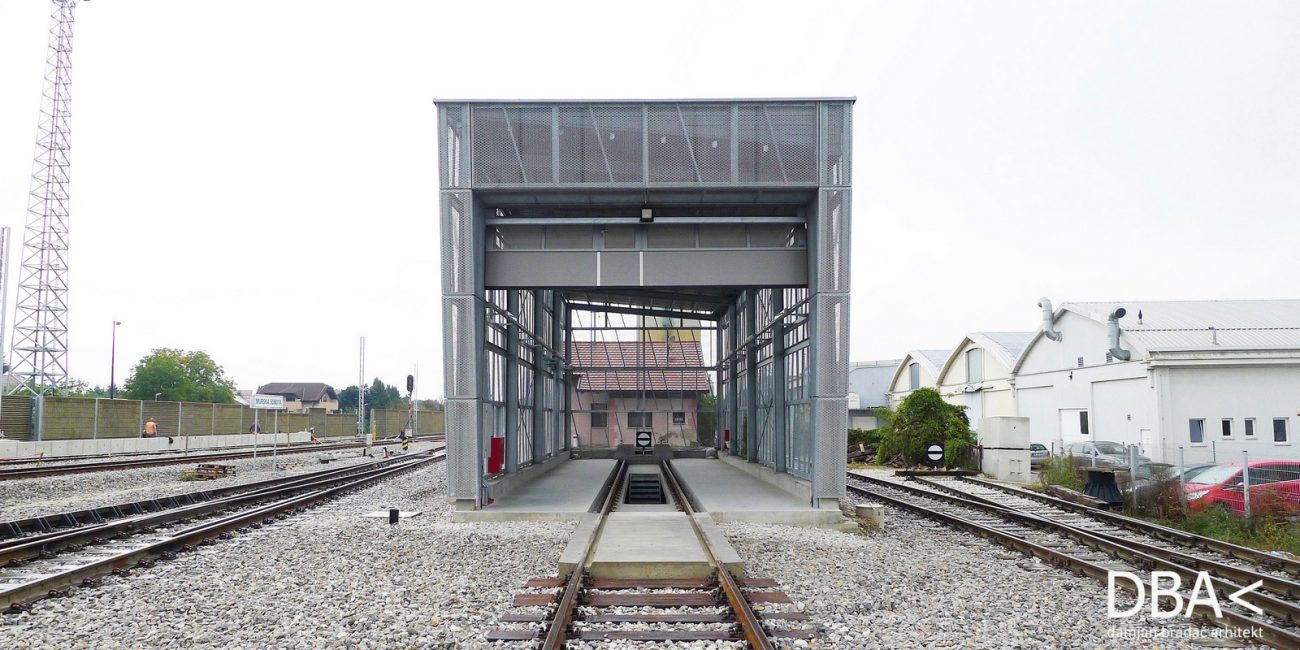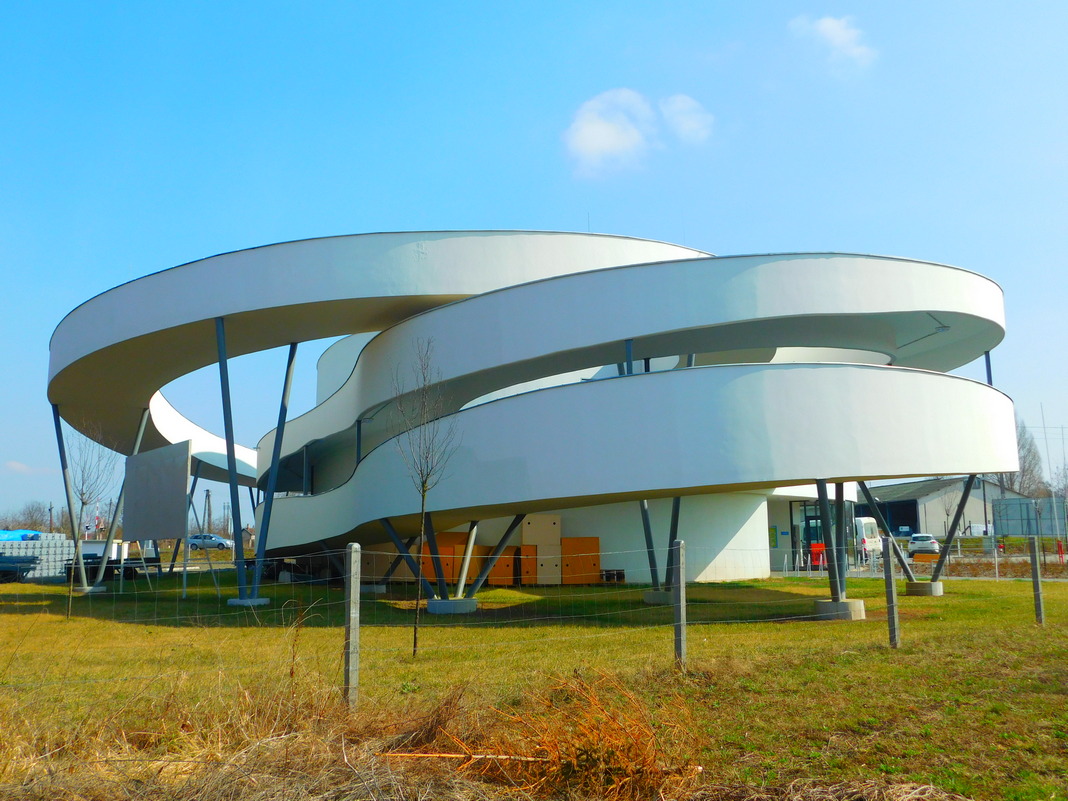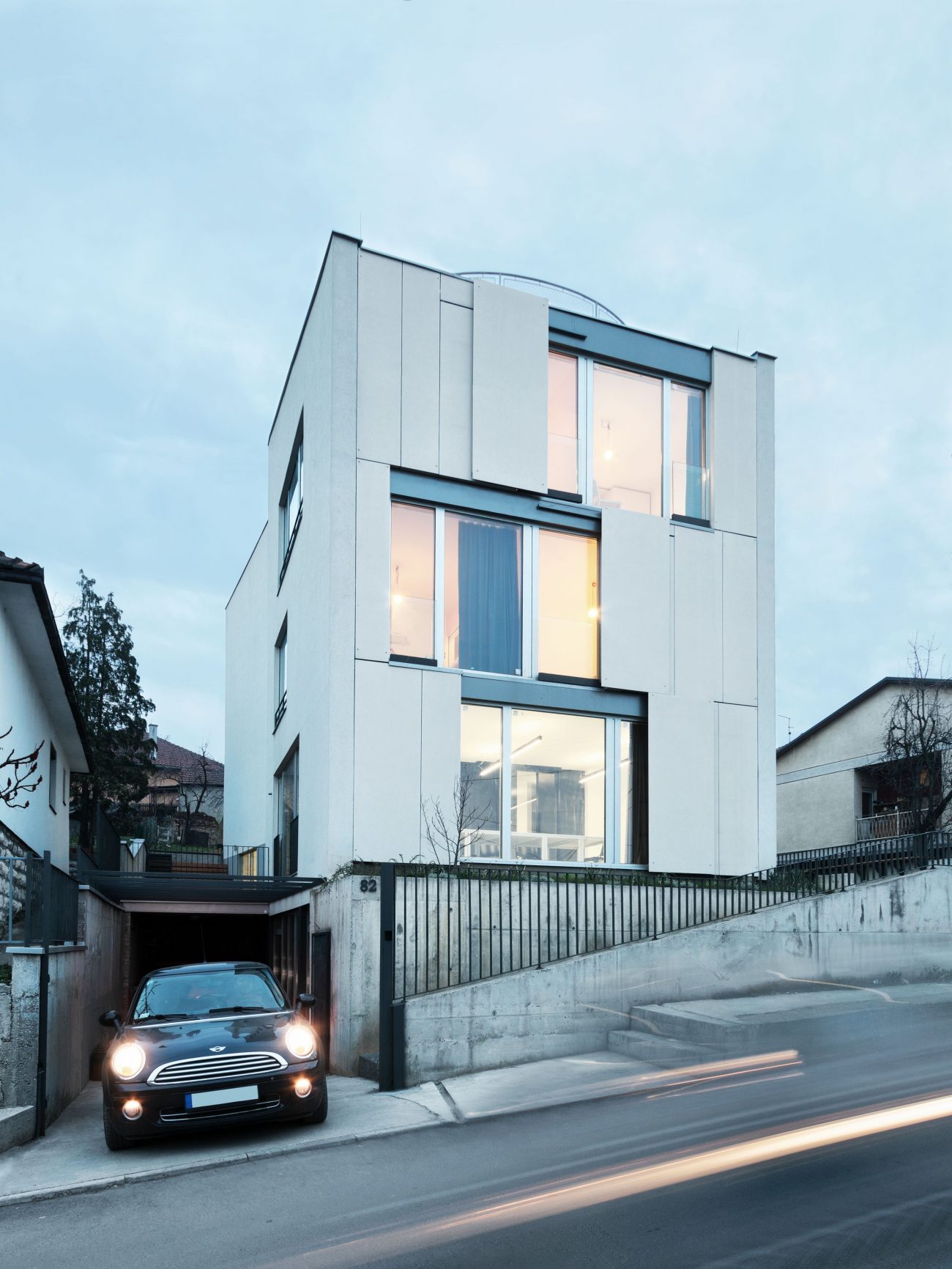Vlad Sebastian Rusu
The Cultural Palace was designed in 1930 by architect Victor Smigelschi from Bucharest, with the intention of being used primarily
Vlad Sebastian Rusu
Rehabilitation and Refunctioning of Blaj Cultural Palace
-
Location
: Blaj, Alba County, Romania
-
General planner
: SC Asiza Birou de Arhitectură SRL Cluj Napoca
-
Architecture
: Vlad Sebastian Rusu Birou Individual de Arhitectură
-
Author
: arch.. Vlad Sebastian Rusu
-
Collaborator
: arch. Ilinca Marcu, arch. stud. Cătălin Iliescu, arch. stud. Teodor Vintilă, arch. stud. Raluca Mirea, arch. stud. Felicia Todericiu
-
Archive research
: arch. Ioana Bârsan, arch. Vlad Sebastian Rusu
-
Structure
: eng. Ovidiu Rusu
-
Client
: Blaj Municipality
-
Door and window frame restoration
: Fazakas János
-
Exterior ornamentation remodeling
: Kereszturi Zoltán
-
Photographs
: Cosmin Dragomir
State before the Intervention. Short Description.
The Cultural Palace was designed in 1930 by architect Victor Smigelschi from Bucharest, with the intention of being used primarily for events initiated by the ASTRA Cultural Association. Beginning with the ’60s, the building had hosted the cinema of the city, during which the first changes to the building and its interior courtyard were made. In parallel with this destination, the first level hosted initially the Museum of History and Ethnography of Blaj, then the Municipal Library and the Wire Broadcasting Center Blaj, all bringing different functional alterations to the interior space.
In the winter of 1995, a violent fire destroyed a large part of the building. Following this trauma, the building was left in ruins until 2012, when the rehabilitation and re‑functionalization project was initiated. The aim was to achieve a multi‑functional and flexible hall, benefiting both from natural light and also a controlled lighting system that could accommodate a broad range of cultural events for the community: concerts, balls, conferences, exhibitions, theater etc. Also, the building will become the headquarters of the Romanian Academy – Alba Branch.
The Palace building is not listed as Historical Monument, although it is included in the protection area of historical monuments of national importance – along with the Greek Catholic Cathedral of St. Trinity and György Bagdi Palace. Part of the original project signed by architect Victor Smigelschi was discovered in the National Archives – Alba County Directorate.
Intervention decision| Conceptual innovation
Following the expert reports and preliminary studies, the need to bring the ruined building up to the current standards of resistance, functioning and operational safety was identified. It was also proposed that the building be brought to the functional and spatial initial stage, by eliminating all subsequent modifications. The conceptual innovation consisted of discrete contemporary interventions evoking the recent and traumatic history of the building and, at the same time, creating a flexible indoor and outdoor public space, adaptable to the various manifestations of the Transylvanian cultural life. Thus, the hall becomes multifunctional by removing the seats and control of natural / artificial light, by using / closing the two skylights in the proposed roof structure. The minimal, reversible means (the metal structure of the hall roof detached by two skylights, the apparent brick, the detached steel ceiling made of pre‑oxidized steel) therefore become a reminiscence of the interior damaged by fire.
 Romană
Romană English
English






















